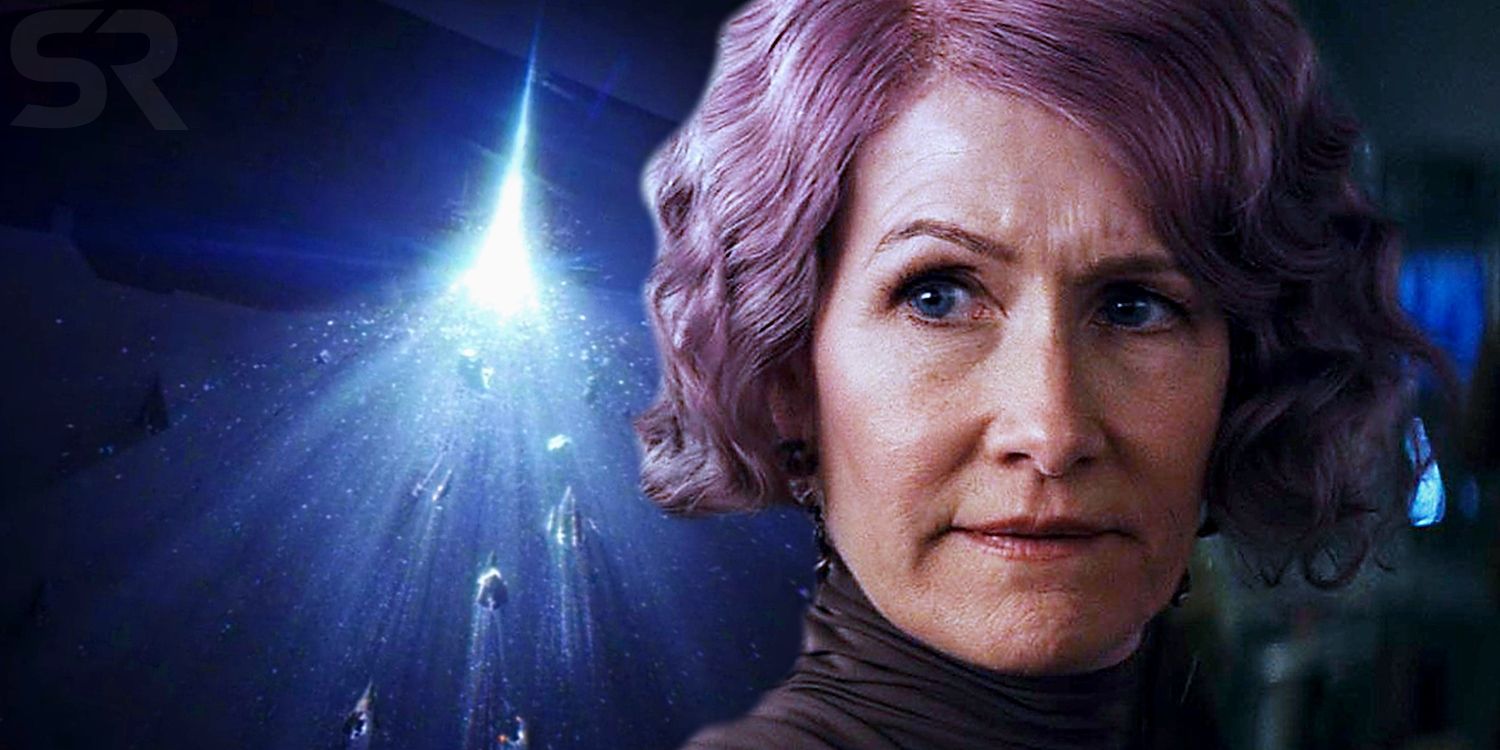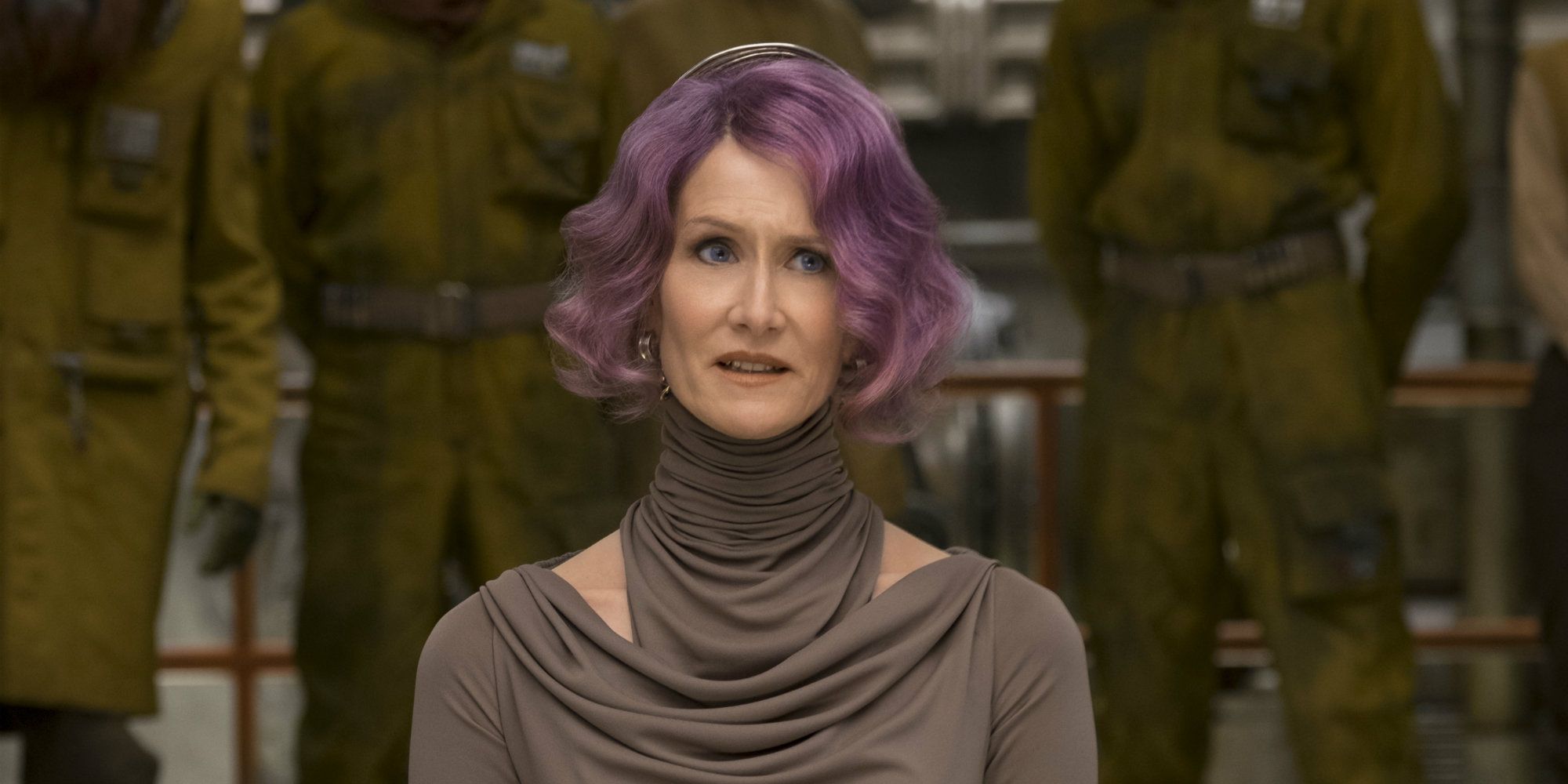Star Wars: The Rise of Skywalker directly addresses the controversial Holdo Maneuver from The Last Jedi. Rian Johnson's central installment of the Star Wars sequel trilogy proved divisive for a number of reasons, from its portrayal of Luke Skywalker to undoing the significance of several mysteries set up by The Force Awakens. Among the secondary (but no less debated) concerns were the actions of Vice Admiral Holdo during The Last Jedi's third act. The dwindling Resistance are in retreat, relentlessly pursued by the mighty First Order, and are being slowly picked off by the superior fleet. In order to buy her people time to evacuate to the nearby base on Crait, Holdo executes a ridiculously ambitious strategy, ramming the Resistance flagship into the First Order's Supremacy at lightspeed, cleaving it in half.
While visually magnificent, this scene caused no small amount of controversy among fans. Some posited that if a ship travelling at lightspeed could collide with another, why wasn't this a regular occurrence in the galaxy? Surely ships would be crashing into stuff all the time? Assuming Holdo did something to ensure she crashed into the Supremacy, the more pressing problem is why the Rebels or Resistance hadn't thought of this effective tactic before? Surely programming ships to automatically ram into the Empire/First Order at lightspeed would've been a great way to take out Star Destroyers, or even the Death Star?
The Rise of Skywalker attempts to resolve such queries. During a Resistance meeting in the wake of Palpatine's return, Dominic Monaghan's Beaumont Kin suggests pulling out the Holdo Maneuver again, but Finn dismisses the idea, arguing that it's a million-to-one shot. This goes some way to explaining why lightspeed ramming isn't a common tactic in the Star Wars playbook. To reinforce the point, The Rise of Skywalker also includes a sequence where Poe uses "hyperspace skipping" to evade some First Order fighters, continuously piloting the Millennium Falcon at lightspeed, one jump after another, each time without colliding into any of his surroundings.
Unfortunately, The Rise of Skywalker's Holdo Maneuver explanation is only half-baked. On one hand, revealing the astronomical odds of pulling off the maneuver helps explain why it hasn't been used as a military tactic before, while also answering why such collisions don't usually happen by accident during space travel. In terms of battle strategies, the Holdo Maneuver is about as reliable as hoping the Emperor "just goes away." Furthermore, the statistics confirm lightspeed is still a relatively safe way to travel, especially as the odds would likely widen further when the pilot is trying to avoid a collision.
However, the new information provided by The Rise of Skywalker creates its own set of problems, chiefly that Holdo's sacrifice is now relegated to cheap, dumb luck. If the Holdo Maneuver had such a low chance of success, even the Vice Admiral herself had no way of knowing whether she could do it, or whether she'd simply end up in another part of the galaxy, leaving her friends stranded. This is very much at odds with how events play out in The Last Jedi. When Holdo's intentions become clear, both Poe and General Hux act like they know what's going to happen. Rather than questioning whether it's possible, they question whether Holdo would actually be willing to do it, and panic once that answer becomes apparent.
It could be argued that Holdo was so skilled, experienced and knowledgeable that only she could possibly pull of the implausible, daring maneuver, but this subsequently implies that Rebel/Resistance pilots previously touted as the best in the galaxy (Han, Poe, etc.) couldn't have emulated Holdo's strategy, which seems equally unfeasible. The Rise of Skywalker complicates matters further when it shows what appears to be a second Holdo Maneuver being executed on a Star Destroyer above Endor during the film's final moments. If this is another example of the controversial ram, exactly how difficult is it?
As uncomfortable as it may be, the slightly depressing truth is simply that The Last Jedi and The Rise of Skywalker don't align with each other. The two films were made by very different directors with very different ideas and the Holdo Maneuver is just one of many contradictions that exist as a result.


